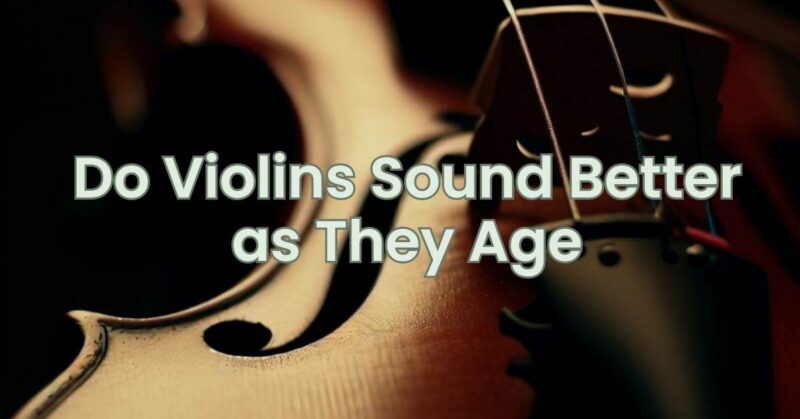One of the enduring beliefs in the world of violins is that these instruments improve with age, acquiring a unique and desirable sound as they mature. This notion has captivated musicians, collectors, and enthusiasts alike, leading to a fascination with vintage and antique violins. But is there any truth to the idea that violins sound better as they age? In this article, we will explore the factors that contribute to the sound quality of violins and examine the complexities surrounding the topic of aging instruments.
The Science of Sound Production: Before delving into the topic of aging, it’s important to understand how sound is produced in a violin. When a string is bowed or plucked, it vibrates, causing the sound waves to travel through the instrument’s body. The vibrations are amplified and shaped by various components, including the soundboard, the body’s resonance, and the materials used in construction.
The Influence of Aging: As violins age, they may undergo subtle changes that can affect their sound. Here are a few factors that can potentially contribute to the tonal qualities of an aging instrument:
- Wood: Over time, the wood used in the construction of a violin can undergo physical and chemical changes. The aging process may cause the wood to become denser, stiffer, and more resonant, potentially influencing the instrument’s sound projection and tonal complexity.
- Varnish: The varnish applied to a violin’s surface can also evolve over time, potentially influencing the instrument’s sound. Some believe that certain varnishes become more transparent and allow the wood to vibrate more freely, resulting in enhanced tonal characteristics.
- Playing-In: With years of use, a violin is subjected to constant vibrations and playing-in by skilled musicians. This consistent playing can potentially affect the instrument’s sound by further refining its responsiveness and tonal qualities.
Subjectivity and Personal Preference: While the idea of aging violins sounding better is captivating, it’s important to acknowledge that the perception of sound quality is highly subjective. The preference for a particular sound is influenced by individual taste, playing style, and the specific demands of a musical genre or repertoire. What may be considered a desirable sound to one musician may not be as appealing to another.
The Role of Craftsmanship: It’s crucial to recognize that the craftsmanship and quality of construction play a significant role in the sound of a violin. A well-crafted modern instrument made by a skilled luthier can possess exceptional tonal qualities comparable to those of older violins. Factors such as wood selection, construction techniques, and setup contribute to the overall sound, regardless of the instrument’s age.
The Myth and the Reality: While many violinists and collectors attest to the exceptional qualities of antique and vintage violins, it’s important to separate the myth from the reality. Not all older violins necessarily sound better than newer ones. Exceptional sound quality can be found in instruments of various ages, depending on craftsmanship, construction, and individual preference.
The notion that violins sound better with age is steeped in tradition, romanticism, and personal anecdotes. While some aging factors, such as changes in wood and varnish, may contribute to the tonal qualities of a violin, the perception of sound is ultimately subjective. Craftsmanship, construction, and personal preference are equally crucial factors in determining the quality of a violin’s sound. Whether you choose an antique instrument or a modern one, finding a violin that resonates with your musical style and captures your artistic expression is the most important consideration.


